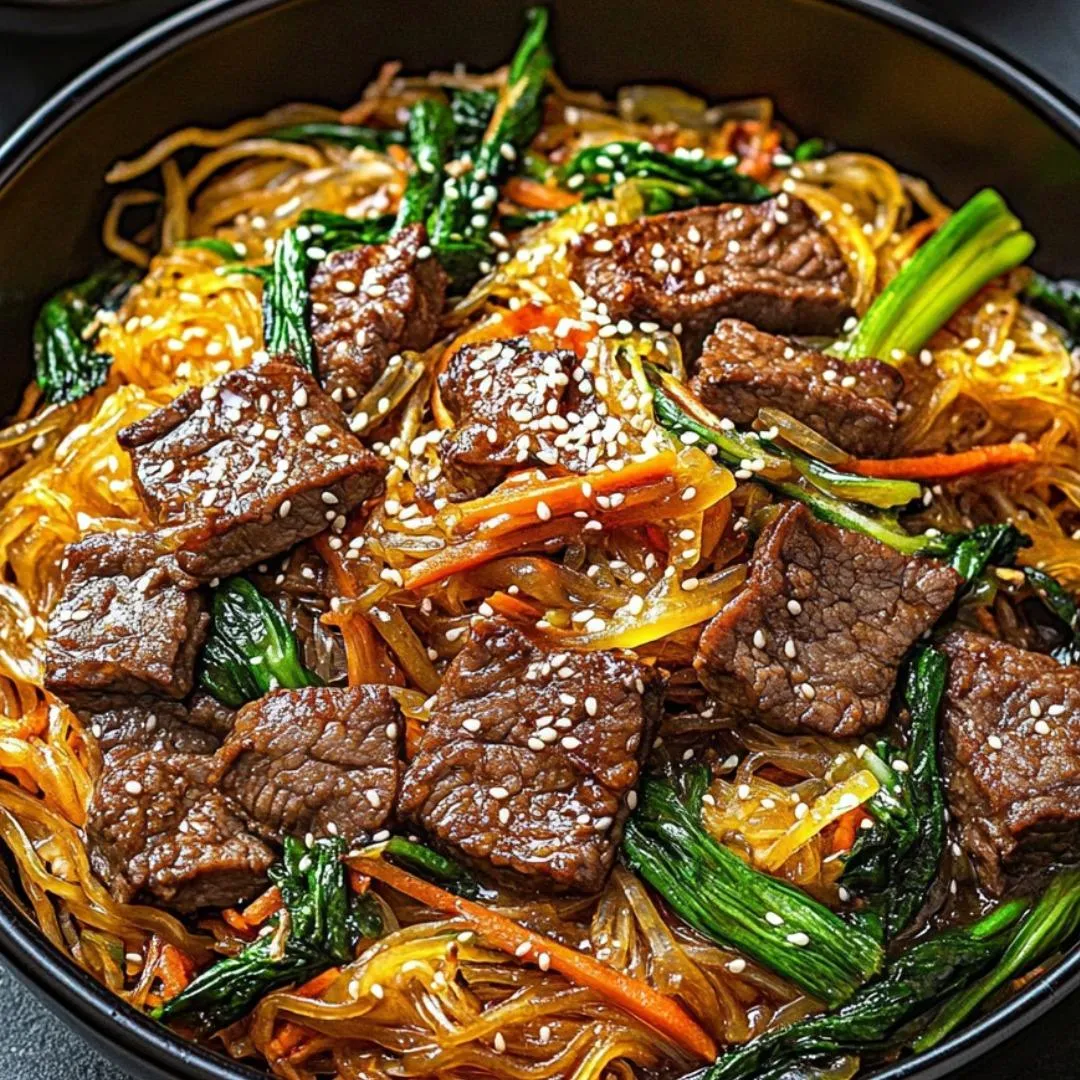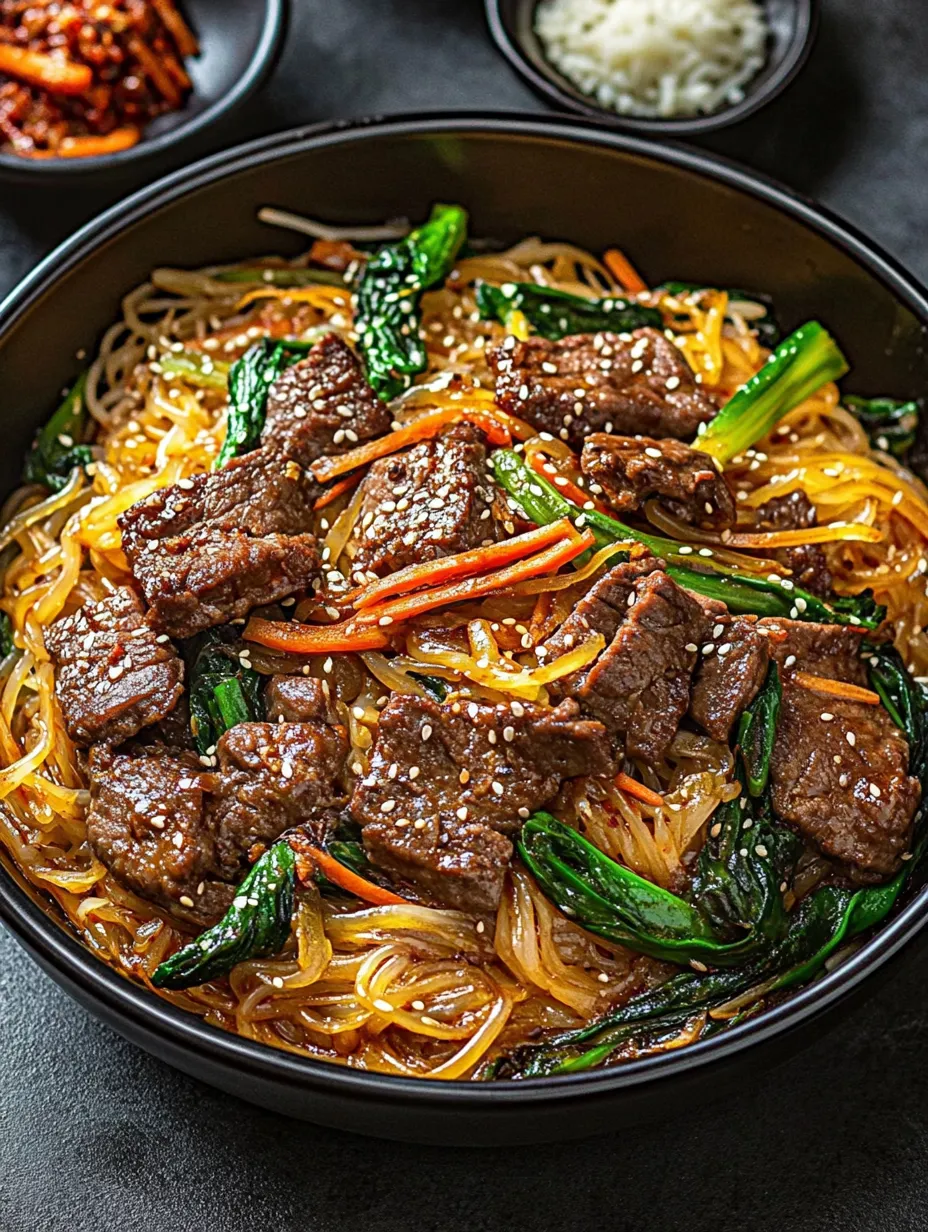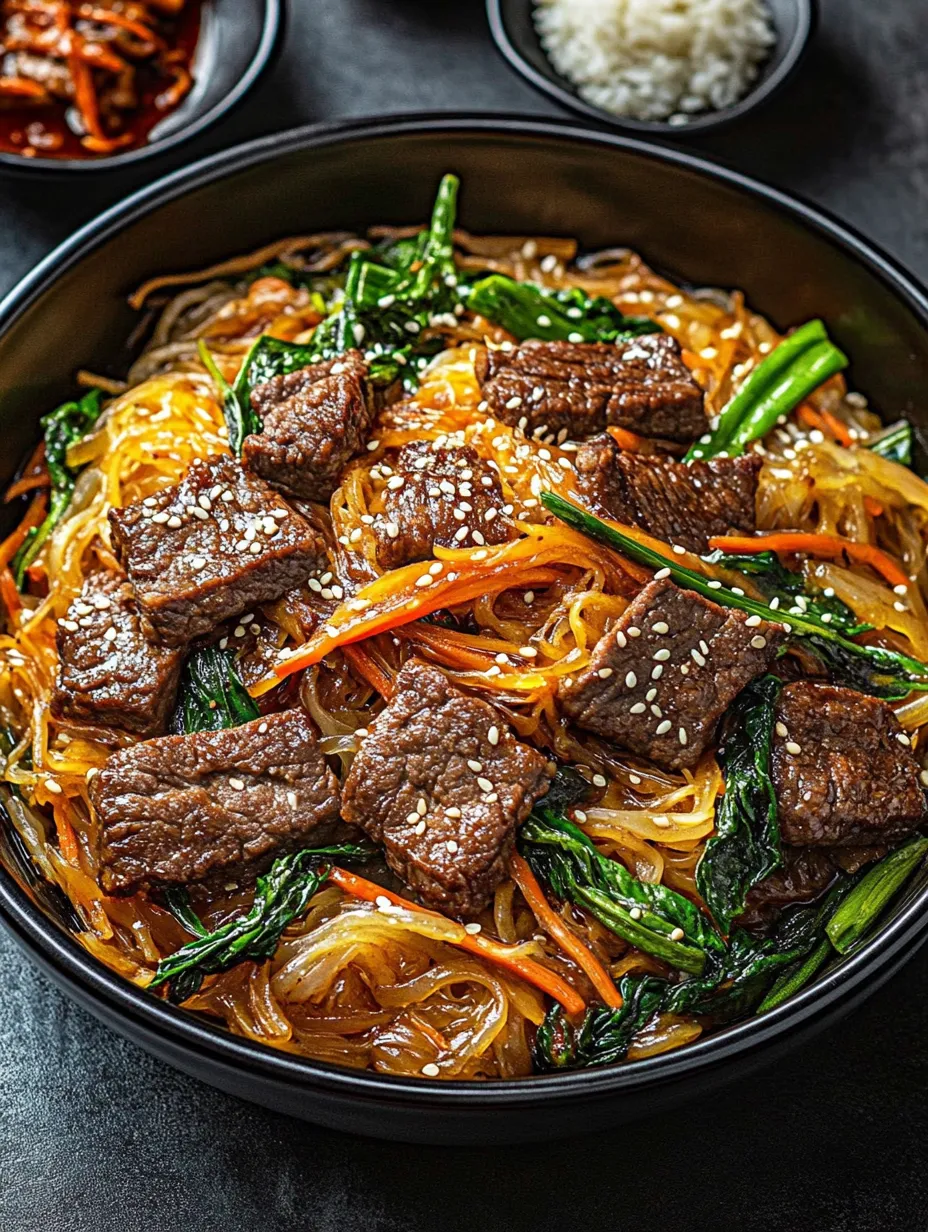 Pin
Pin
Whenever I want to bring a smile to friends or family—especially on comfort-filled or festive days—I reach for Japchae. There's something about those chewy glass noodles, juicy beef, and a rainbow of veggies that just lights up the whole meal. That hint of nutty sesame and salty soy always makes people go back for more, and leftovers somehow taste even cosier the next day.
The very first time Japchae hit the table at a potluck I went to, everyone begged for the details—now family asks for it on chill nights in and big celebrations too.
Delicious Ingredients
- Brown sugar: Brings gentle sweetness and tones down everything savory—grab the softest sugar for best mixing
- Soy sauce: Gives savory depth and salt—pick tamari if you want gluten free, or low-salt to keep things lighter
- Olive oil: Handy for sautéing veggies and proteins—stick with extra virgin for the best results
- Sesame oil: The toasted stuff is key—deep, buttery flavor and a nutty smell, look for bottles with a golden hue
- Spinach leaves: Throws in bright color and gets soft real fast—baby spinach works super well
- Garlic cloves: Fresh, minced garlic kicks off the flavor base with aromatic punch
- Green onions: Tossed in at the end for a pop of freshness and a tiny bit of crunch
- White onion: Sliced thin so it melts into the dish and adds natural sweetness
- Carrots: Julienned carrots keep every bite crisp and a little sweet for balance
- Korean sweet potato noodles: These chewy noodles hold onto sauce like magic—find them at Asian stores or swap if needed
- Thin-sliced beef: Look for marbled meat for best taste, but tofu, shrimp, or chicken are easy stand-ins
Tasty Step Guide
- Finish and Toss:
- Scrape everything into a giant bowl and toss gently—fingers or tongs, whatever works—so every bit gets coated and nice and shiny. Toss in extra green onions for more zing.
- Add Spinach and Combine:
- Drop the spinach into the veggie pan. Stir for about a minute until it's wilted and bright. Mix all veggies and your beef right in with the already cooked noodles.
- Build the Flavor Base:
- Throw in green onions and the minced garlic. Cook just long enough for them to get fragrant and start to turn golden—don't walk away or they'll burn.
- Sauté the Vegetables:
- Pour olive oil into a pan, add in the onions and carrots, and cook on medium until they soften and turn a bit glossy. Splash in what's left of the soy sauce, sesame oil, and sugar, and give it all a good stir.
- Sear the Beef:
- Pop the beef slices in a ripping hot skillet. Shower over half your soy, sugar, and sesame oil. Keep it moving so it browns evenly, then set it aside once it smells amazing and caramelized.
- Prepare the Noodles:
- Bring a big pot of water to a rolling boil, add a slug of oil, and toss in the sweet potato noodles. Boil for about six minutes, then drain and cool quickly under running water. Set them aside so they don't glue together.
 Pin
Pin
Japchae is close to my heart because those sweet potato noodles are just something else. They take on all the flavors and always remind me of my grandma—she’d say to toss’s best while warm so everything soaks in. Making it always makes me think of laughing with my cousins and family in the kitchen.
Saving Leftovers
Japchae keeps really well. Pop leftovers in something airtight and stash in the fridge—you’ve got up to four days. To jazz it up again, toss it in a hot pan with a dash of water or a bit more sesame oil. No need to reheat if you’re rushing, it’s tasty cold too!
Swapping Ingredients
If you don't have or can't find Korean sweet potato noodles, try using rice or mung bean noodles. Going meatless? Tofu or mushrooms taste awesome instead of beef. Use tamari for gluten-free and coconut sugar for a twist on sweetness.
 Pin
Pin
Best Ways to Enjoy
You can just dig in since Japchae is a full meal by itself. Want to go bigger? Pile it up next to grilled meat, rice, or a side of kimchi. For parties, lay it out on a big platter and sprinkle over sesame seeds and green onions. Spice fans—work in some gochujang at the end!
Korean Backstory
Japchae was first served in ancient Korean palaces. Folks loved it for being flexible, beautiful, and tasty. These days, it’s everywhere—not just on special holidays, but any day when people crave something cozy and colorful.
FAQs About the Recipe
- → What type of noodles are used in japchae?
Korean japchae uses dangmyeon, which are glass noodles made from sweet potato starch. These noodles give it that signature chewiness everyone loves.
- → Can I substitute the beef in japchae?
You sure can! Swap in chicken, shrimp, or tofu—they all soak up the flavors and go great with the veggies and sauce.
- → How do I achieve the best noodle texture?
Boil the noodles until they’re just soft—usually 5 or 6 minutes—then drain them and toss with a little oil so they don’t clump, before you fry everything together.
- → What vegetables pair well in japchae?
People usually toss in carrots, onions, spinach, and green onions. But you can also throw in mushrooms, bell peppers, or zucchini for even more color and crunch.
- → What seasonings make japchae special?
The magic is all about soy sauce, a splash of sesame oil, sweet brown sugar, and a bit of garlic. That combo brings out the cozy, sweet-savory taste.
- → Is japchae served hot or cold?
Japchae’s pretty chill—it’s tasty warm or at room temp. That makes it awesome for dinner or even as party food.
